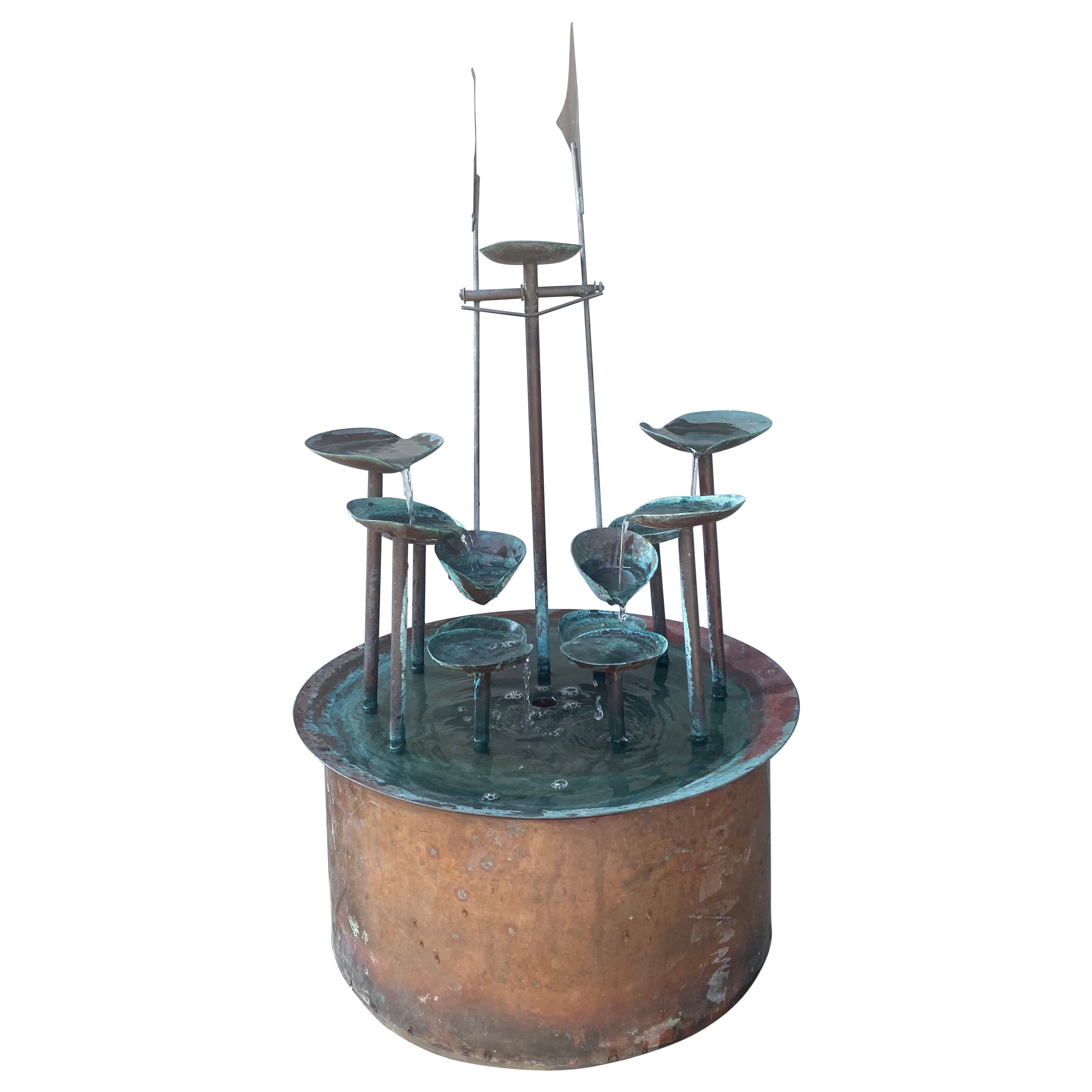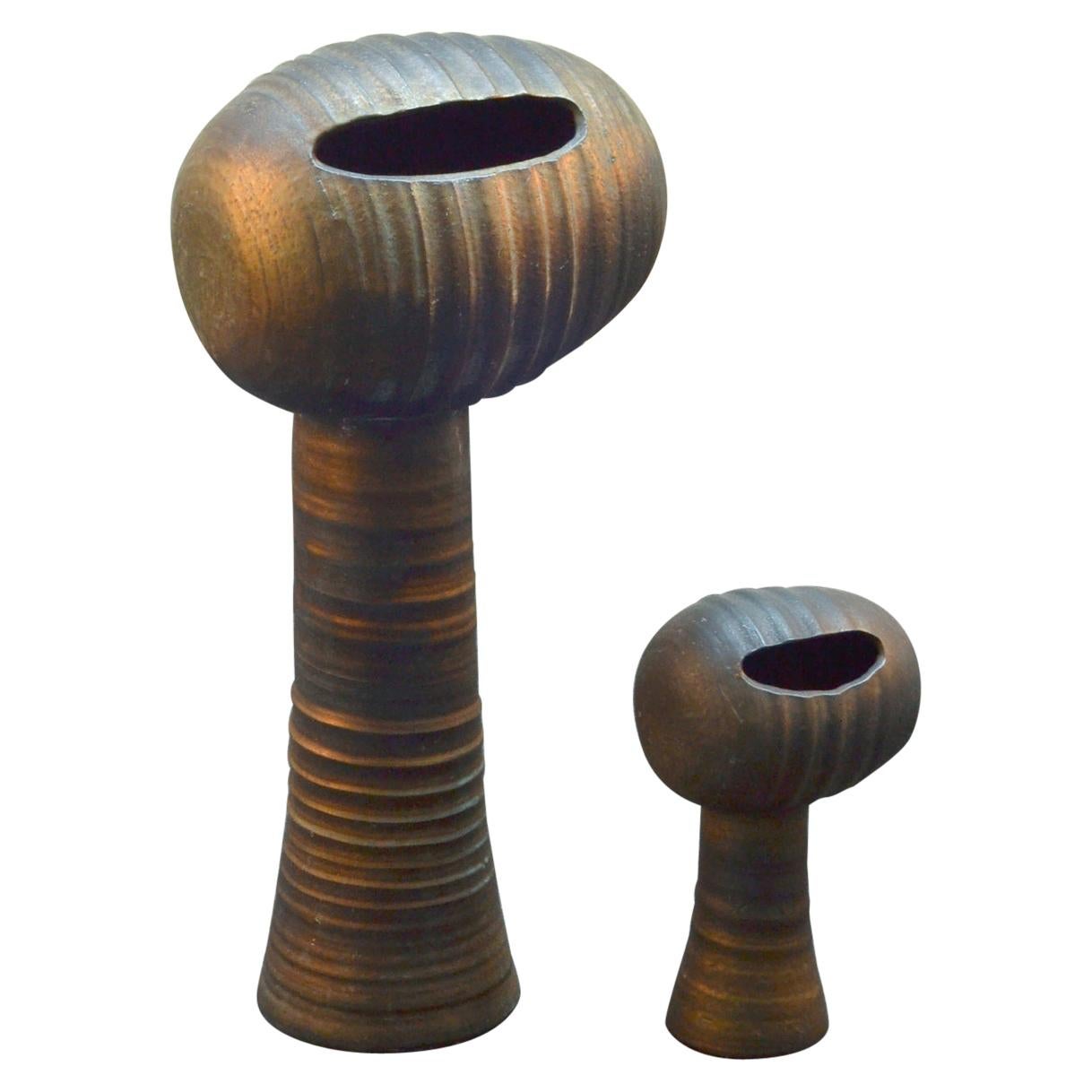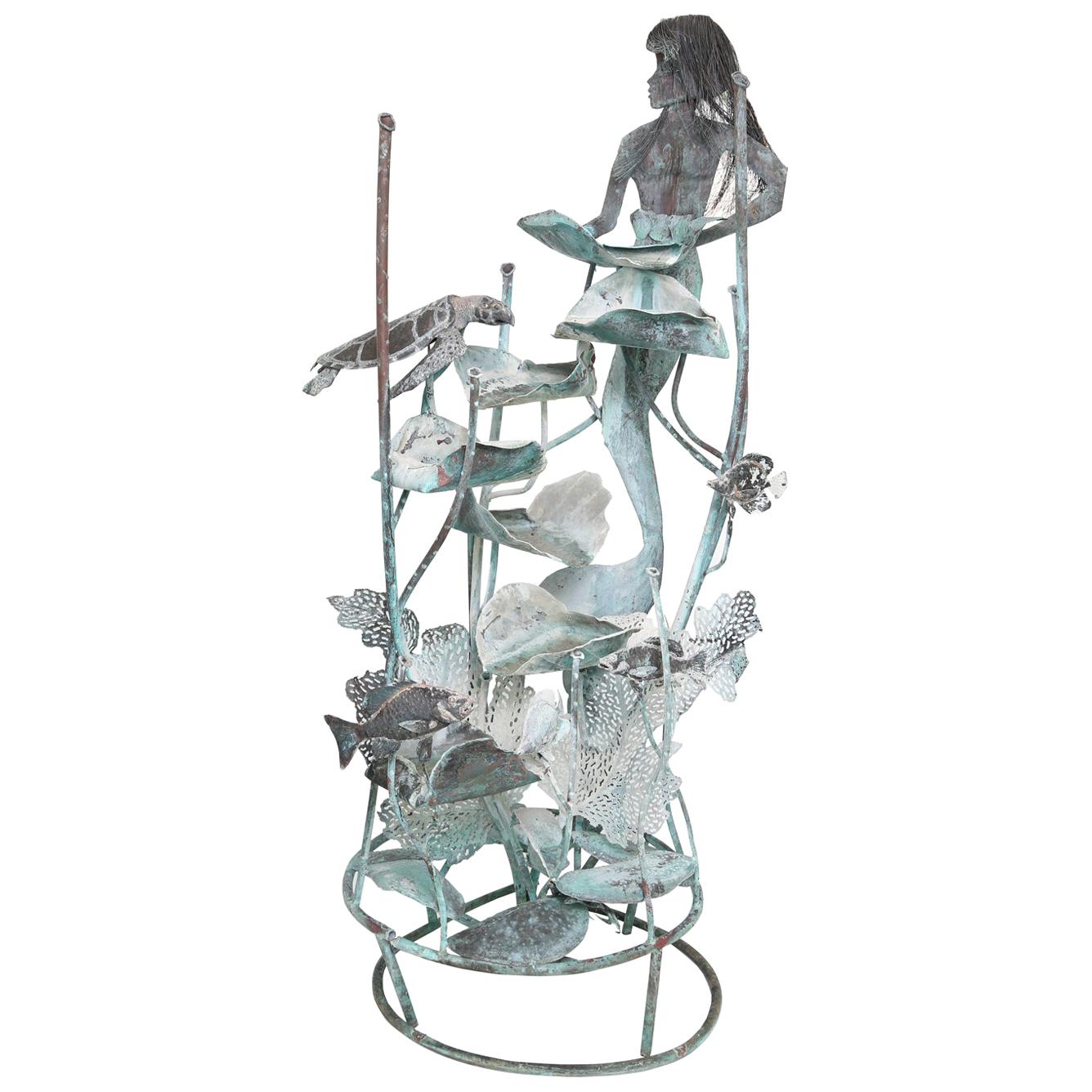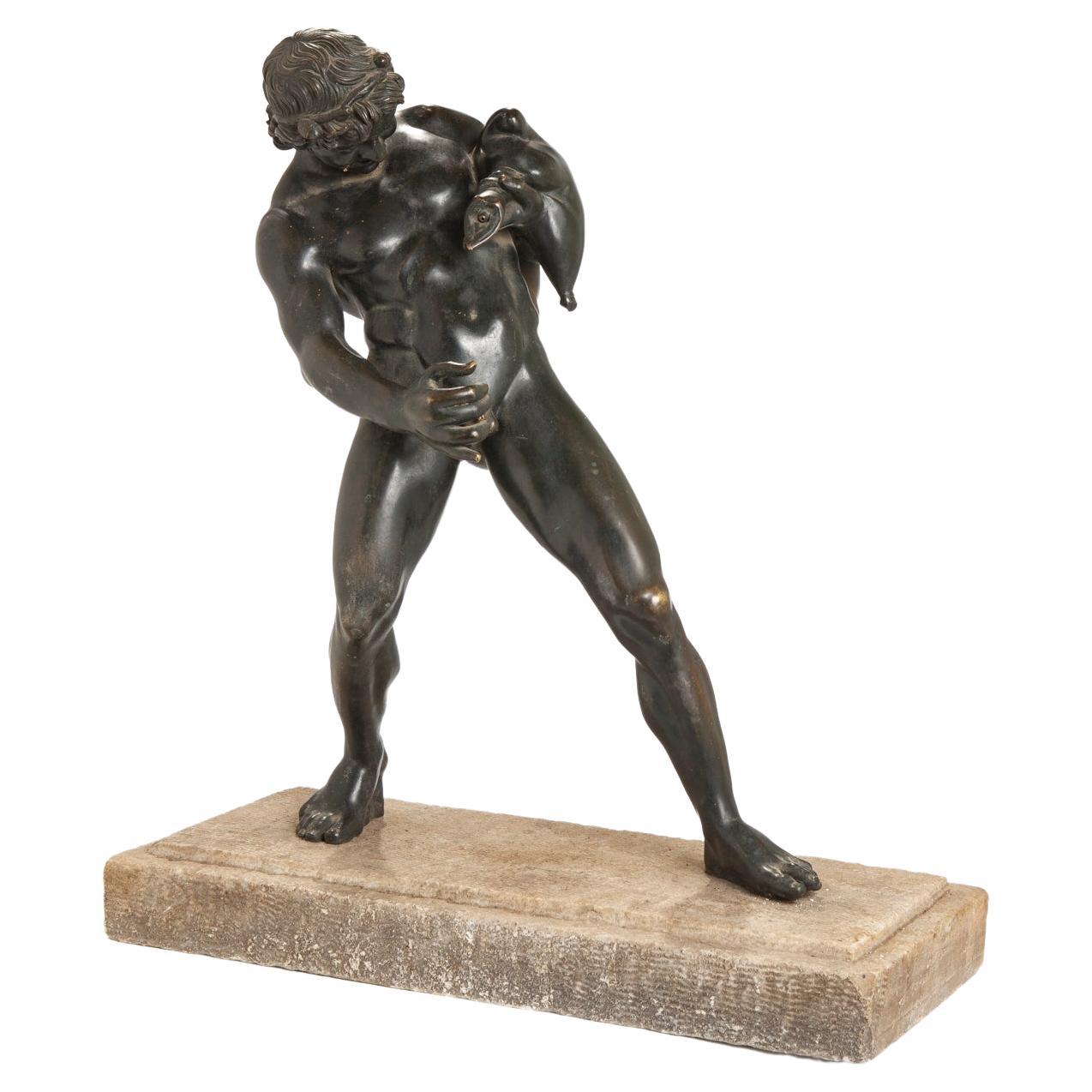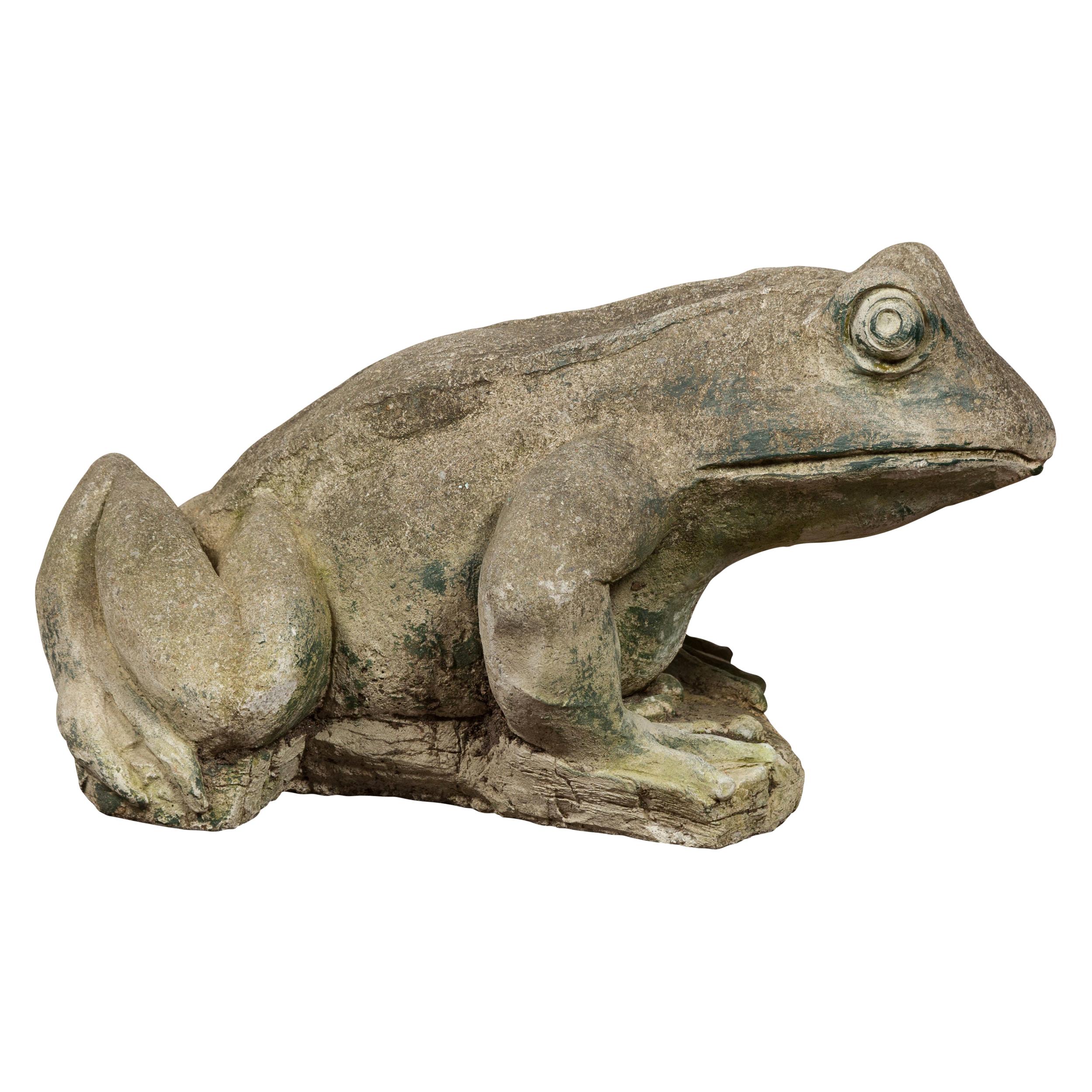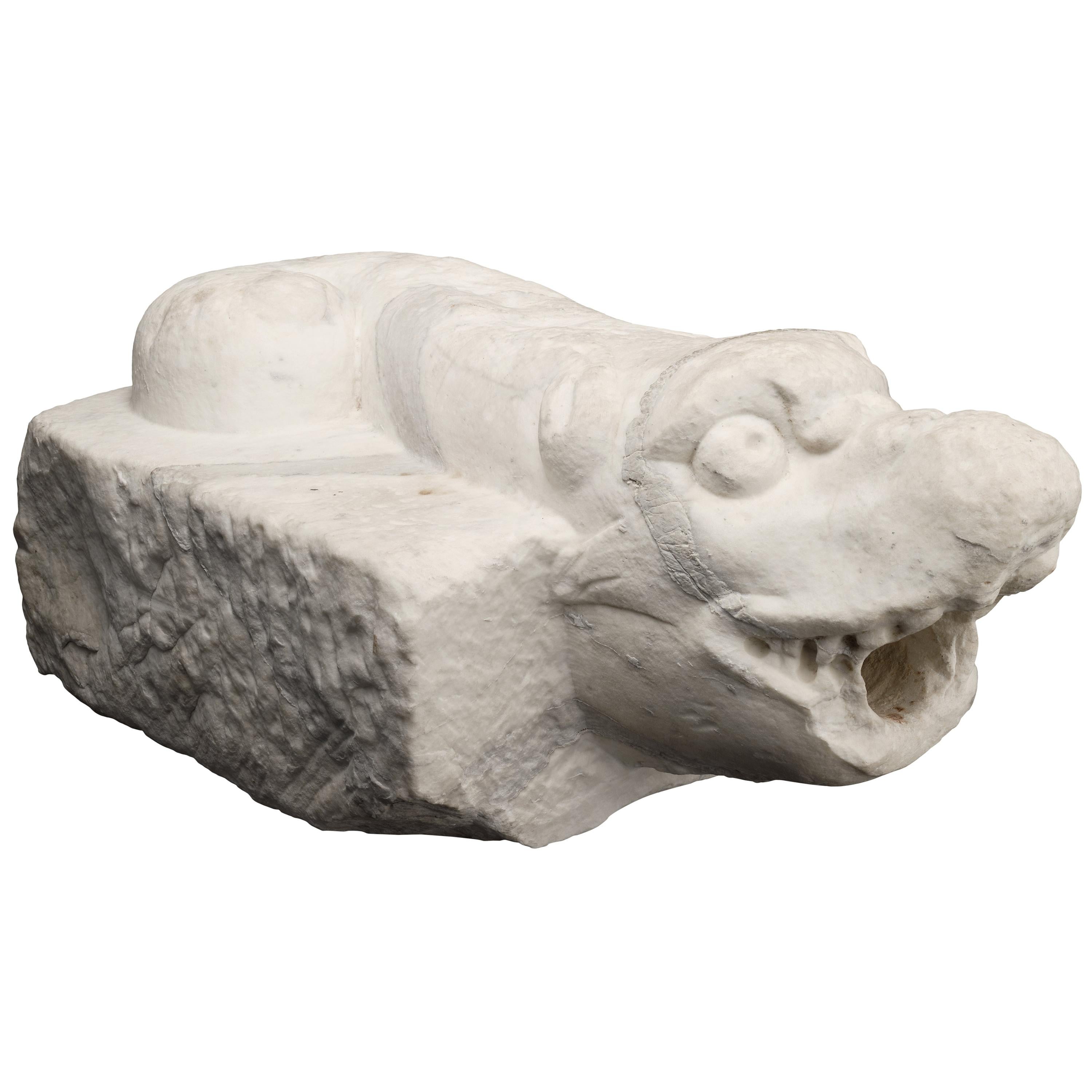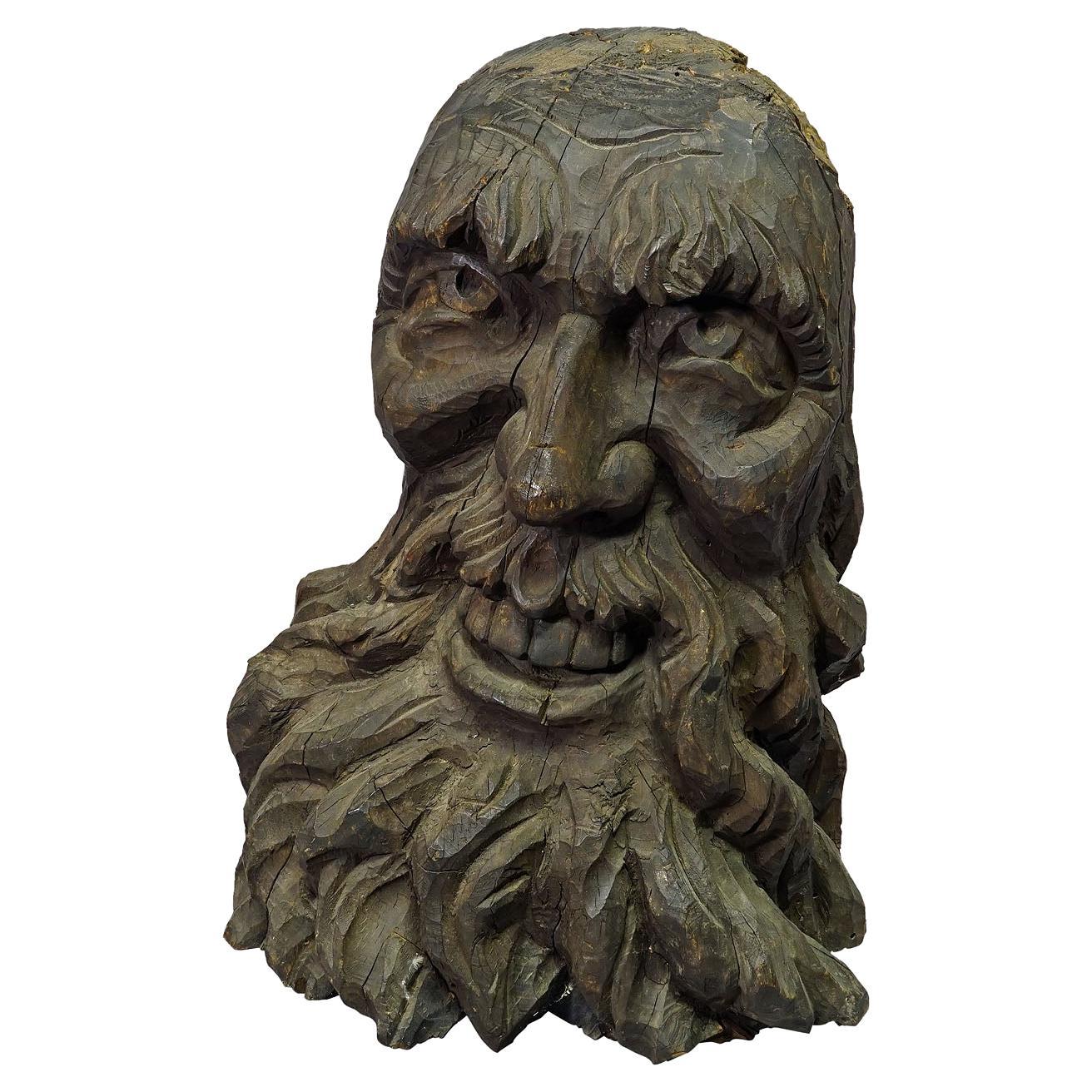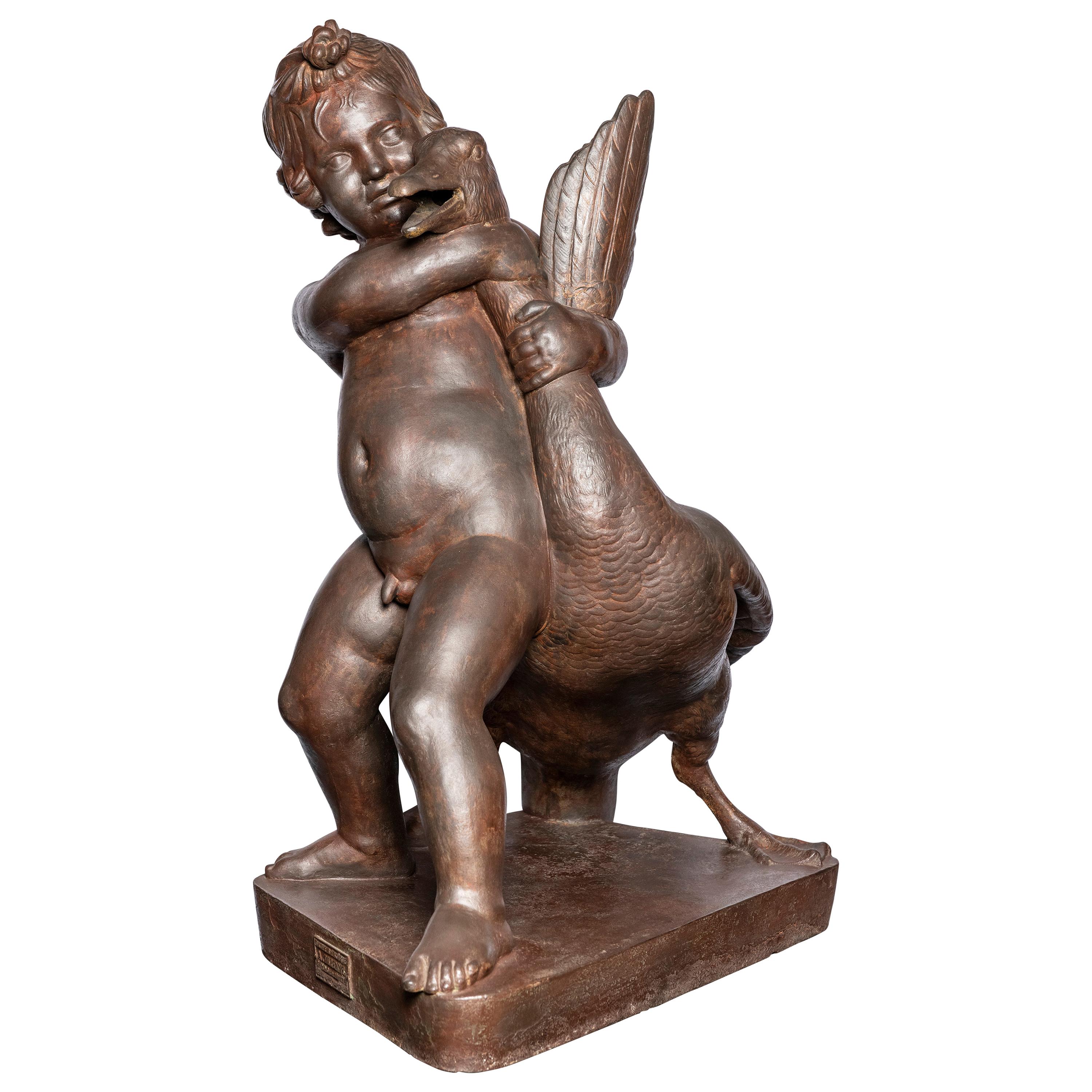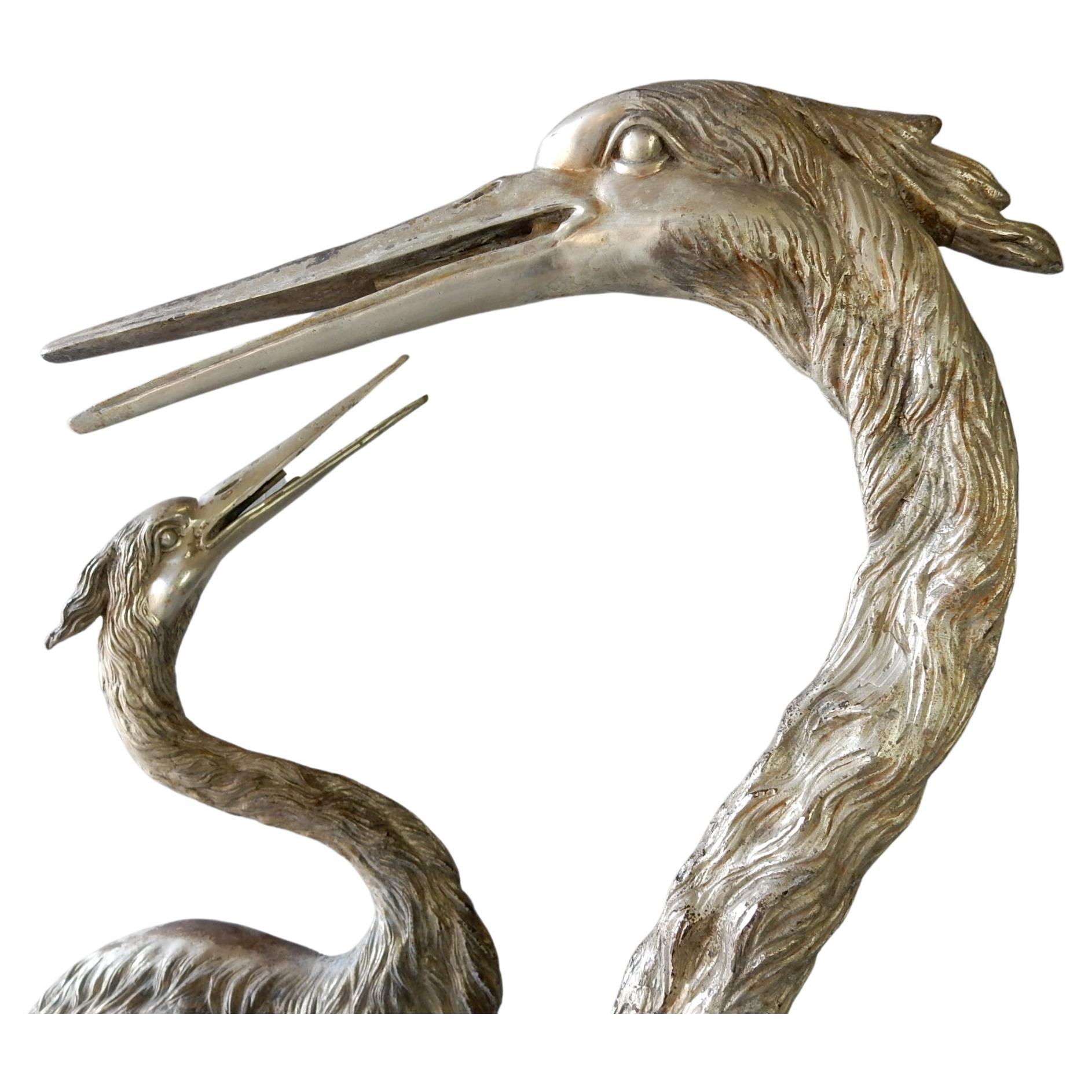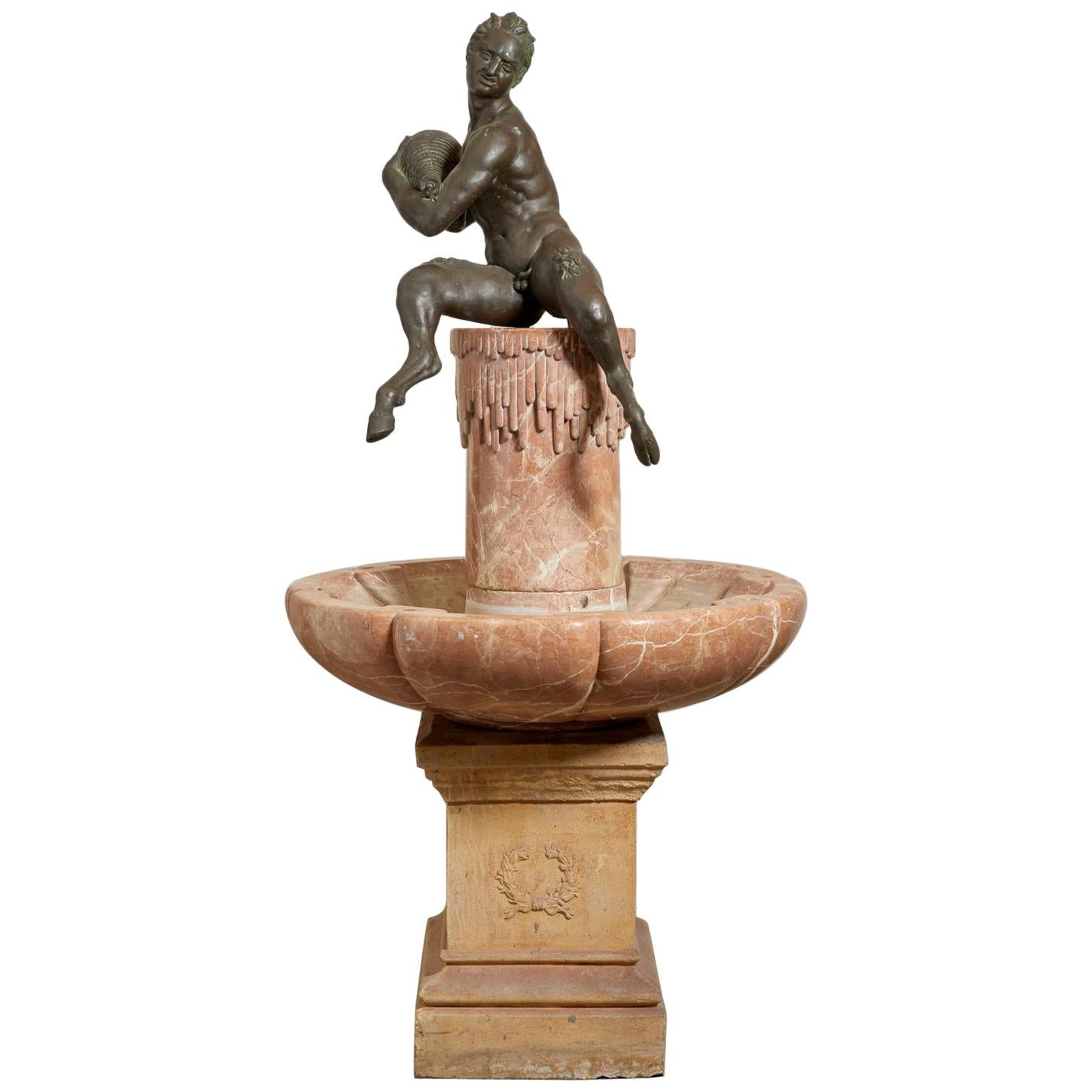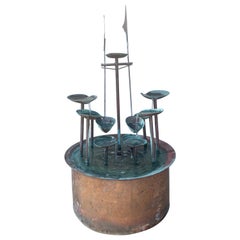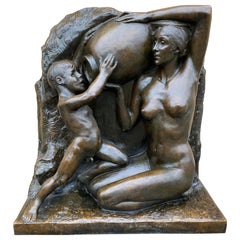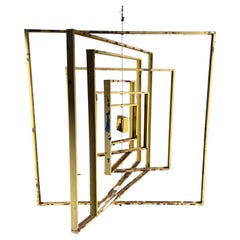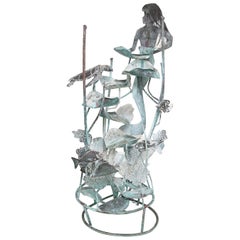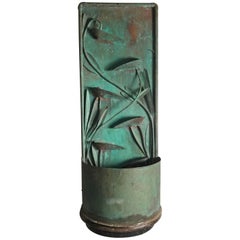
Modernist Hanging Copper Water Fountain Sculpture, Amazing Form and Patina
View Similar Items
Want more images or videos?
Request additional images or videos from the seller
1 of 8
Modernist Hanging Copper Water Fountain Sculpture, Amazing Form and Patina
About the Item
- Dimensions:Height: 36 in (91.44 cm)Width: 14 in (35.56 cm)Depth: 9 in (22.86 cm)
- Style:Mid-Century Modern (Of the Period)
- Materials and Techniques:
- Place of Origin:
- Period:
- Date of Manufacture:1960s
- Condition:Wear consistent with age and use.
- Seller Location:Buffalo, NY
- Reference Number:1stDibs: LU106248655613
About the Seller
4.3
Vetted Seller
These experienced sellers undergo a comprehensive evaluation by our team of in-house experts.
Established in 1987
1stDibs seller since 2014
1,119 sales on 1stDibs
Typical response time: 5 hours
More From This SellerView All
- Wonderful Modernist Kenetic Motion Copper Fountain / Water Feature, Hand MadeLocated in Buffalo, NYIngenious copper fountain / water feature, solid copper construction, Modernist design Artisan made, hand executed. Sculpture in motion, great for garden, or indoor space.Category
Vintage 1970s American Mid-Century Modern Fountains
MaterialsCopper
- Monumental Art Deco Bronze Wall Fountain / Sculpture by Janet ScudderBy Janet Scudder, Roman Bronze WorksLocated in Buffalo, NYmonumental American bronze 47 h × 49 w × 22 d in (119 × 124 × 56 cm) Incised signature and foundry mark to base 'Janet Scudder Roman Bronze Works NY'. years as a sculptor After her...Category
Vintage 1920s American Art Deco Fountains
MaterialsBronze
- Large Modernist Abstract Kinetic Metal Hanging SculptureBy Yaacov AgamLocated in Buffalo, NYLarge 60" x 60" Modernist Abstract kinetic metal hanging sculpture. Attributed to Yaacov Agam. Eight metal squares graduating in size. Sculpture has been outside for 40-50 years show...Category
Vintage 1970s American Folk Art Mobiles and Kinetic Sculptures
MaterialsMetal
- Monumental Four-Piece Studio Pottery Fountain, Manner of Raymor, ItalyBy RaymorLocated in Buffalo, NYMonumental four-piece studio pottery Fountain, manner of Raymor, Italy. Wonderful scale and proportion. Glazed ceramic, incised geometric designs, Versatile: can be separated and used as two jardiniers...Category
Mid-20th Century Italian Mid-Century Modern Fountains
MaterialsClay, Pottery
- Modernist Handcrafted Copper Wire and Lucite "Lite-Up" Base Tree SculptureBy Curtis JeréLocated in Buffalo, NYModernist handcrafted copper wire and Lucite "lite-up" base tree sculpture, unsigned, very well executed, twisted copper wire with mesh leaves, black acrylic base, on off light source.Category
Vintage 1960s American Mid-Century Modern Abstract Sculptures
MaterialsCopper
- Modernist Wire, Copper and Mache "Worlds Expansion" Albright KnoxLocated in Buffalo, NYModernist wire. Copper and papier mâché "Worlds Expansion" Albright Knox, amazing hand executed sculpture, recently purchased from Buffalo NY estate, pos...Category
Vintage 1960s American Mid-Century Modern Sculptures and Carvings
MaterialsCopper, Wire
You May Also Like
- Architectural Ceramic Water Fountains Sculptures Bronze Glazed 1960 MobachBy MobachLocated in London, GBThe sculptural head shaped water features hand-turned in ceramic, produced by Mobach in Utrecht during the 1960's. Mobach produced this unique mat bronze lustre glaze has a result of...Category
Vintage 1960s European Mid-Century Modern Abstract Sculptures
MaterialsCeramic
- Copper Mermaid Fountain by Glen MayoBy Glen MayoLocated in West Palm Beach, FLWhimsical fountain sculpture, of copper, by metal artist Glen Mayo; its mermaid focal point holding a leaf which cascades water down the fountain, among turtles, angel fish, other se...Category
1990s North American Fountains
MaterialsCopper
- Nude Male Bronze Sculpture FountainLocated in Malibu, CABronze male sculpture signed. Fonderia Giorgio Sommer Calabritto Napoli Thomas, sculptor, lived and worked in the Naples area, and especially on Capri, from 1889 to 1906. Given this ...Category
20th Century Italian Renaissance Figurative Sculptures
MaterialsCarrara Marble, Bronze
$13,297 Sale Price29% Off - American Giant Stone Frog with Patina, Originally Used as a FountainLocated in Atlanta, GAAn American giant stone frog from the 20th century, with great patina. Made in the USA in 1987, this giant stone stone frog used to be a fountain (notice the remnants of a pipe below...Category
Vintage 1980s American Animal Sculptures
MaterialsStone
- Italian Ancient Marble Sculpture Fountain, Late 16th CenturyLocated in Milano, ITSea monster Carrara marble mouth fountain Italy, late 16th century It measures 13.8 x 31.5 x 18.9 in (35 x 80 x 48 cm) State of conservation: some small evident gaps and widespread signs of wear due to outdoor exposure. The gray marks crossing it do not come from restoration, but are rather the natural veins of the marble. This work has some morphological characteristics typically associated with the iconography of the sea monster: an elongated muzzle, sharp teeth, protruding eyes, elongated ears, and a coiled serpent's tail. An in-depth series of studies on artistic depictions of the sea monster attempted to verify how this symbol evolved in antiquity in the European and Mediterranean contexts and how it gradually changed its image and function over time. The iconography itself is mutable and imaginative and its history is rich with cultural and artistic exchange, as well as the overlapping of ideas. This occurred so much that it is difficult to accurately pinpoint the "types" that satisfactorily represent its various developments. However, we can try to summarize the main figures, starting from the biblical Leviathan and the marine creature that swallowed Jonah (in the Christian version, this figure was to become a whale or a "big fish", the “ketos mega”, translation of the Hebrew “dag gadol”). Other specimens ranged from the dragons mentioned in the Iliad (which were winged and had legs) to "ketos” (also from Greek mythology), the terrifying being from whose Latinized name (“cetus”) derives the word "cetacean". See J. Boardman, “Very Like a Whale” - Classical Sea Monsters, in Monsters and Demons in the Ancient and Medieval Worlds, in Papers presented in Honor of Edith Porada, Mainz am Rhein 1987, pp. 73-84). In Italy the monster underwent yet further variations: it can be found in Etruscan art on the front of some sarcophagi representing the companion of souls, while among the Romans we find the “Pistrice” (cited by Plinio in Naturalis Historia PLIN., Nat., II 9, 8 and by Virgilio in Eneide: VERG., Aen., III, 427), which appeared in the shape of a stylized hippocampus or a very large monstrous cetacean and evolved into a hideous being with a dragon's head and long webbed fins. During the Middle Ages, the sea monster was the object of new transformations: at this time, it is often winged, the head is stretched like a crocodile, the front legs are often very sharp fins - sometimes real paws - until the image merges with dragons, the typical figures of medieval visionary spirituality widely found throughout Europe (on this topic and much more, see: Baltrušaitis, J., Il Medioevo fantastico. Antichità ed esotismi nell’arte gotica, Gli Adelphi 1997). In Italy during the 15th and 16th centuries, the revival of classicism - representative of the humanistic and Renaissance periods - led to a different reading of these "creatures". Indeed, the sea monster was also to find widespread use as an isolated decorative motif, especially in numerous fountains and sculptures where dolphins or sea monsters were used as a characterizing element linked to water (on this theme see: Chet Van Duzer, Sea Monsters on Medieval and Renaissance Maps, London, The British library, 2013). From the morphological point of view, the "sea monsters" of this period are mostly depicted as hybrid figures, in which the body of a mythological or real being (a hippocampus, a sea snake, a dolphin), is joined to a head with a rather indistinct appearance. It was usually characterized by large upright ears, an elongated snout, sharp teeth and globular, protruding eyes; a complex and indefinite figure, both from the symbolic point of view and from that of its genesis. The work we are examining is placed as a cross between the medieval sea serpent and the Renaissance dolphin, with stylistic features which recall the snake as often used in heraldry (such as the "snake" depicted in the coat of arms of the Visconti - the lords and then dukes of Milan between 1277 and 1447 - and which, for some, may be derived from the representations of the “Pistrice” that swallowed Jonah). In the search for sources, Renaissance cartography and in particular woodcuts should not be neglected. See for example the monsters of Olaus Magnus, from the editions of the “Historia de gentibus septentrionalibus” (“History of the peoples of the north”) and the natural histories of Conrad Gesner, Ulisse...Category
Antique 16th Century Italian Renaissance Animal Sculptures
MaterialsCarrara Marble
- Large Patinated Bronze Fountain with Heron SculpturesLocated in London, GBThis wonderful patinated bronze work is designed to function as both a water fountain and a superb piece of sculpture. The item will be well-suited to either an indoor or outdoor setting. The piece takes the form of two herons...Category
20th Century French Anglo-Japanese Fountains
MaterialsBronze
Recently Viewed
View AllMore Ways To Browse
Outdoor Water Fountain
Indoor Fountain
Mid Century Garden Water Fountain
Modernist Fountain
Used Outdoor Water Fountains
Copper Water Fountain
Sculpture Outdoor Fountain
Outdoor Sculptures And Fountains
Copper Water Fountains
Outdoor Modern Fountain
Indoor Water Fountain
Midcentury Modern Water Fountain
Copper Outdoor Sculpture
Vintage Water Fountain Outdoor Fountains
Cascading Water Fountain
Tiered Water Fountain
Modernist Copper Watering
Fountain Figure
